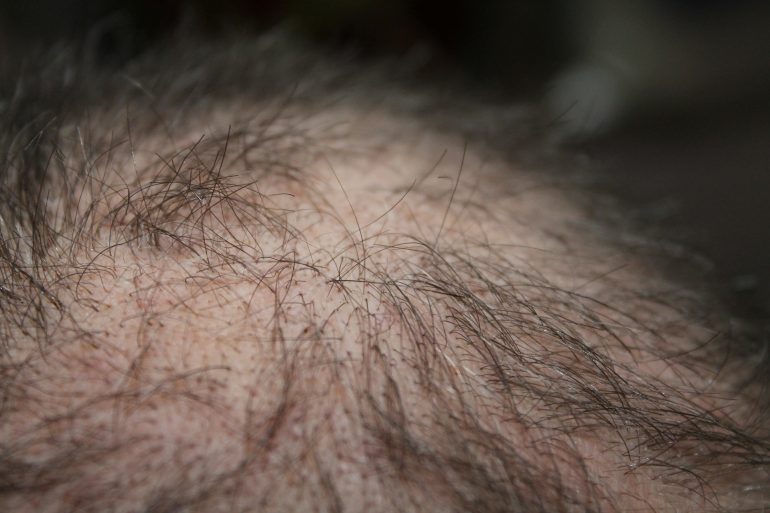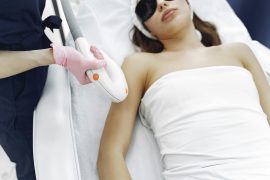Around two-thirds of men experience male pattern baldness as they grow older. In fact, four in 10 men will begin to show obvious balding signs before they reach the age of 35. Male pattern baldness is often drawn out, just like many other ageing signs. It takes a while before most men notice they are going bald.
Detecting baldness early is very important if you are going to lessen its effects. You need to act fast if you discover you are losing your hair. Sadly, spotting hair loss is often difficult. If one is to go by the popular symptoms of hair loss you find on the net, you’ll find that many of them are not accurate, and you may mix up the occasional falling strands of hair for signs that you are going bald.
What makes hair fall out?
It is perfectly normal for you to lose your hair to breakage as it grows. You will likely find fallen strands of hair on your pillows, after combing your hair or taking a shower. It is quite easy to gloss over this loss from day to day because your hairline and hair thickness often stay the same. It is when there is substantial hair loss that most people take notice. At this time, you must act swiftly just in case there is more to it than natural causes.
The following symptoms might indicate you are losing too much hair:
- Rapid loss of hair
- You find bald spots where your hair used to be
- Your hair density is gradually reducing
Many reasons may explain the excess loss of hair. One of such is genetics. It was revealed in a review done in 2019 that 50% of men and women suffer from pattern baldness.
Products like Rogaine can help with slowing the spread of and tackling pattern baldness.
With ageing comes an increased possibility of pattern baldness spreading gradually. Other rapid causes of hair loss include:
- Cancer or blood pressure medication
- Tight tugging hairstyles
- Physical and mental stress
- Chemotherapy or other radiation therapy
- Changes in body hormones
The following are effective steps you can take to curb hair loss.
Treat with medication
Minoxidil and Finasteride are two effective drugs clinically approved for halting hair loss. Minoxidil acts by improving the take-up of nutrients by hair strands and facilitating blood flow, while Finasteride blocks the production of dihydrotestosterone (commonly called DHT), a hormone that causes wilting and falling of hair strands. With both medications, you will see some of your hair grow back, but not without side effects. While skin reactions and irritations are some of the known side effects of using Minoxidil, using Finasteride could lead to reduced libido and erectile dysfunction in men.
Get a laser comb
If you’re looking for something other than medication then you’re safe getting a laser comb as they are FDA approved. In a study carried out on 100 men in 2014, after using a laser comb three times a week for 26 weeks, considerable improvement was observed in their hair regrowth. Some agree that these combs inhibit oxidation in hair follicles.
Switch haircare products
Evidence suggests that several hair gels and other hair care products facilitate hair loss because their chemical constituents remain on the scalp long after and inhibit regrowth of new hair follicles. Replace as much as possible any consumption of hair care products that contain chemicals with organic products.
Reduce excessive hot showers
Very hot showers rid your scalp of the protection of essential oils and expose your hair to swelling and dryness which could damage them. Although there is no definitive proof linking hot showers with hair loss, it is believed that they contribute to thinning and wilting of hair follicles.
Follow a healthy diet
Following a Mediterranean diet (lots of fish, olive oil and fresh vegetables) has been proven to reduce the risk of pattern baldness in men. A study, carried out in 2017, showed the relationship between consuming herbs/vegetables and reduced predisposition to baldness.
Use the right shampoo
Dihydrotestosterone is the main hormone responsible for baldness, and some shampoos can help you limit its production. Any shampoo that contains between 1 and 2 percent ketoconazole will inhibit its production. Ketoconazole, like finasteride, inhibits the conversion of testosterone to DHT, and without side effects, since it is applied topically, not ingested.
Take good care of your hair
Good care of your hair could help in reducing hair loss and facilitate regrowth. Keep your hair and scalp clean to reduce the risk of damage or outright loss of hair. Use good conditioners and shampoos and do away with any harsh hair care routines.
Schedule a scalp massage
Some suggest that scalp massages can improve blood flow in your scalp, as well as improve hair density and growth. It also doubles as a distressing activity that prevents hair loss.
Get multivitamin supplements
There are studies to support the use of vitamins in mitigating hair loss. Despite reviews on the usage of vitamins and minerals in mitigating hair loss, how they do so remains largely vague and unclear. This does not invalidate the fact that vitamin deficiency may increase the chances of hair loss, though. Below are some minerals and vitamins that are good for your hair:
- Vitamin A, B, C, D, E
- Selenium
- Zinc
- Iron
Make sure you consult a doctor before you decide on taking multivitamin supplements. The right supplements to use contain the vitamins and minerals you need in a single dose.
Go for Hair Transplants
If you’ve lost so much hair, the perfect solution might just be getting a transplant. You will need hair strands from a part of the body that is dihydrotestosterone-resistant, then they will be grafted on to bald spots on your scalp.
Specialists such as gethair.co.uk use a variety of transplant techniques when they carry out hair transplants. With the advancement in the process, stem cells are used to facilitate regrowth of the donor area where follicles are taken from. This ensures a good supply for as many grafts and transplants that may be required.





